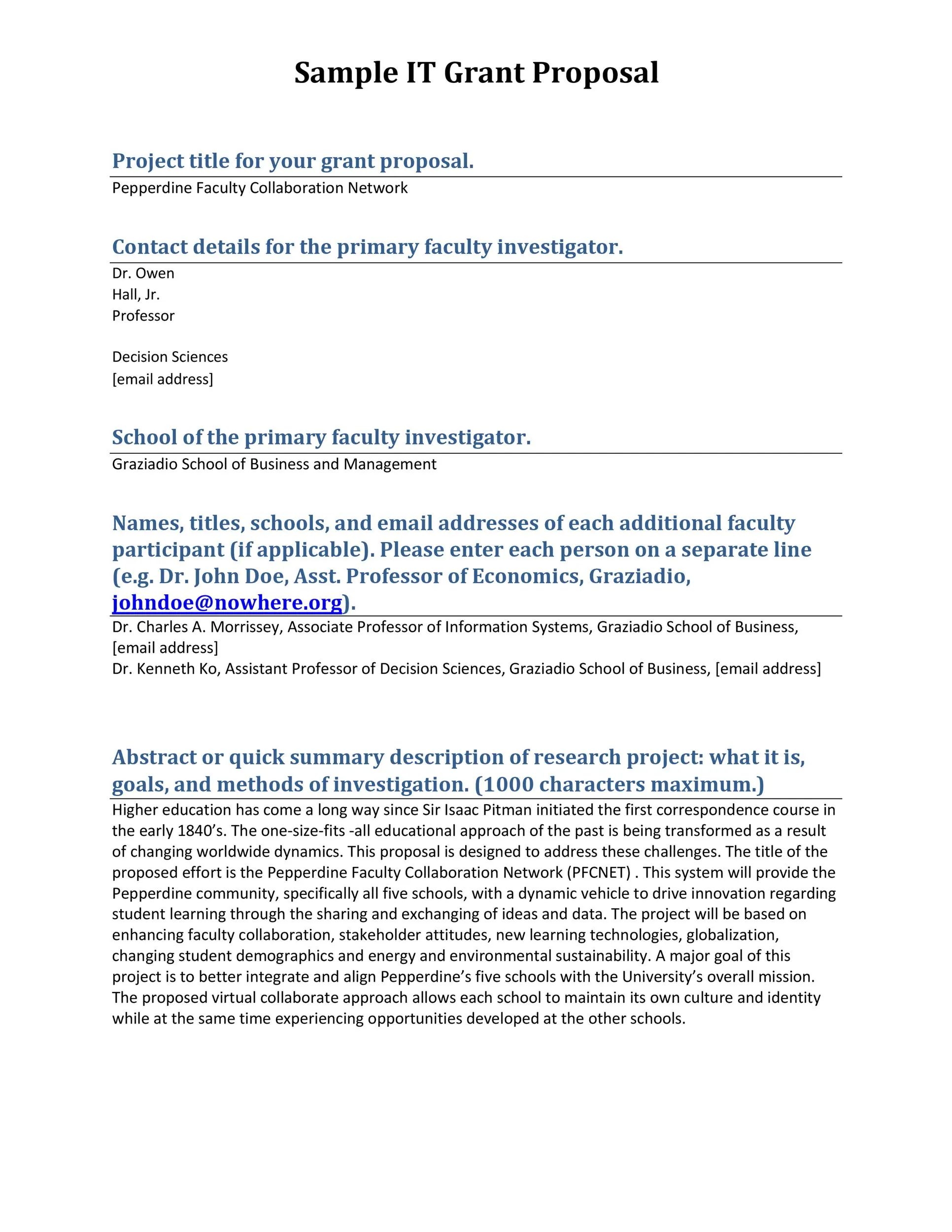What is a Grant Proposal Cover Letter?
A grant proposal cover letter is a crucial document that accompanies your full grant application. It serves as the initial introduction of your organization and the project you’re seeking funding for to the potential funder. This letter provides a brief overview, sets the tone, and expresses your intent to secure the grant. Think of it as your first impression. It is an opportunity to capture the attention of the grant reviewers and make them want to learn more about your project and organization. Writing a compelling cover letter is essential for any successful grant application. It sets the stage for the rest of your proposal and significantly impacts whether your application is considered for funding. The cover letter should be carefully crafted and tailored to the specific grant opportunity.
Purpose of a Grant Cover Letter
The primary purpose is to introduce your organization and project to the funding agency. It aims to immediately capture the funder’s interest, persuade them of your project’s value, and encourage them to delve deeper into your full proposal. It demonstrates your understanding of the funder’s mission and priorities and how your project aligns with them. The cover letter also serves as a formal communication tool, establishing a professional tone and setting the stage for a strong relationship with the funder. Furthermore, it should highlight the key benefits of your project and how it addresses the specific needs outlined in the grant guidelines. Essentially, it’s a persuasive summary that makes a case for why your organization deserves funding.
Key Components of a Grant Proposal Cover Letter
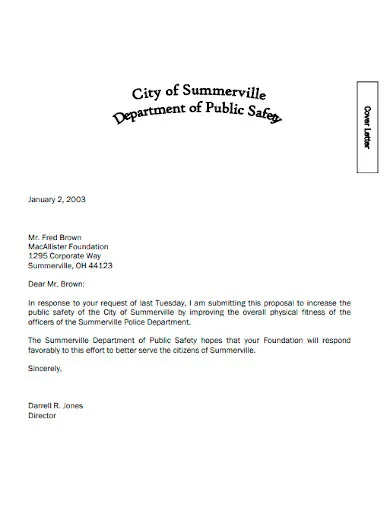
Contact Information and Date
Begin with your organization’s official contact information. This typically includes your organization’s name, address, phone number, email address, and the date. Ensure all details are accurate and up-to-date. Place this information at the top left or right corner of the letter. Following this, include the date the letter is written. This is important for record-keeping and tracking when the application was submitted. The date should reflect the day you plan to mail or submit the application. Use a professional business letter format, ensuring a clear and concise presentation of your details to maintain formality and professionalism.
Applicant Organization Details
Briefly introduce your organization. State your name, your mission, and a concise overview of your organization’s work and accomplishments. Highlight your organization’s relevant experience and qualifications. Mention any past successes in similar projects or initiatives. Emphasize your credibility and demonstrate why your organization is the right one to carry out the proposed project. Keep this section brief and focused on the aspects most relevant to the grant proposal. If your organization has any unique qualities or specific expertise, be sure to mention them. This section is about establishing credibility and showing why the funder should trust you with their funds.
Project Summary
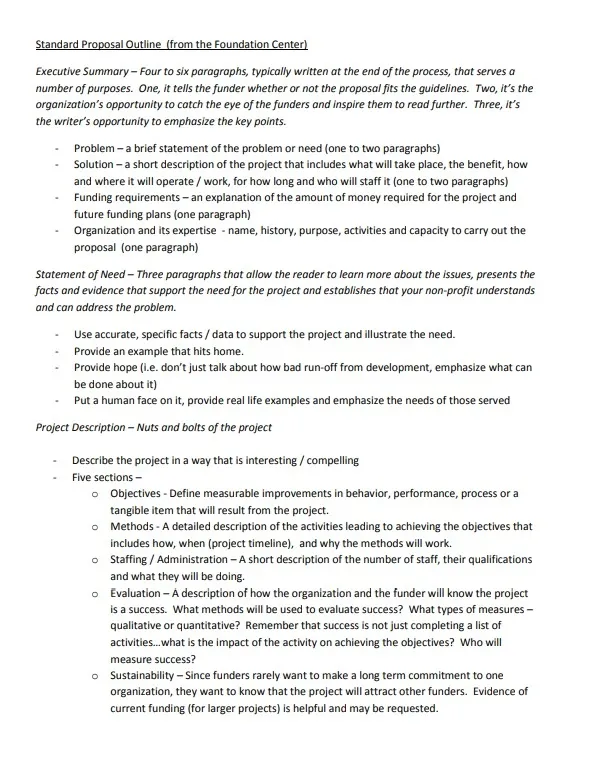
Provide a concise, compelling summary of your proposed project. Clearly state the project’s purpose, objectives, and the specific problem or need you’re addressing. Briefly explain your project’s goals, activities, and anticipated outcomes. Emphasize the impact the project will have and who it will benefit. Keep the summary brief and engaging, typically within a few sentences or a short paragraph. Tailor this section to match the funder’s interests and priorities. Ensure the summary is clear, specific, and conveys the core essence of your project in a manner that encourages the reader to explore your full proposal.
Call to Action
Conclude with a clear and direct call to action. Express your enthusiasm for the opportunity and reiterate your interest in the grant. State your commitment to fulfilling the project’s goals and objectives. Include a polite but firm request for the funder to consider your application. Also, thank the funder for their time and consideration. Providing contact information for any follow-up questions or clarifications can be beneficial. A well-written call to action reinforces the purpose of the letter and ensures the funder understands the next step you desire them to take.
Formatting and Presentation
Maintain a professional and polished appearance. Use a standard business letter format, including a clear font like Times New Roman or Arial, and a font size of 12 points. Keep the letter concise, typically one page or less. Ensure appropriate margins and spacing for easy readability. Use a formal salutation, such as “Dear Mr./Ms./Mx. [Last Name],” followed by a professional closing, like “Sincerely” or “Respectfully.” Proofread the letter carefully for any grammatical errors or typos. A well-formatted cover letter demonstrates your attention to detail and commitment to professionalism, positively impacting the funder’s impression of your organization and proposal.
Tips for a Compelling Cover Letter
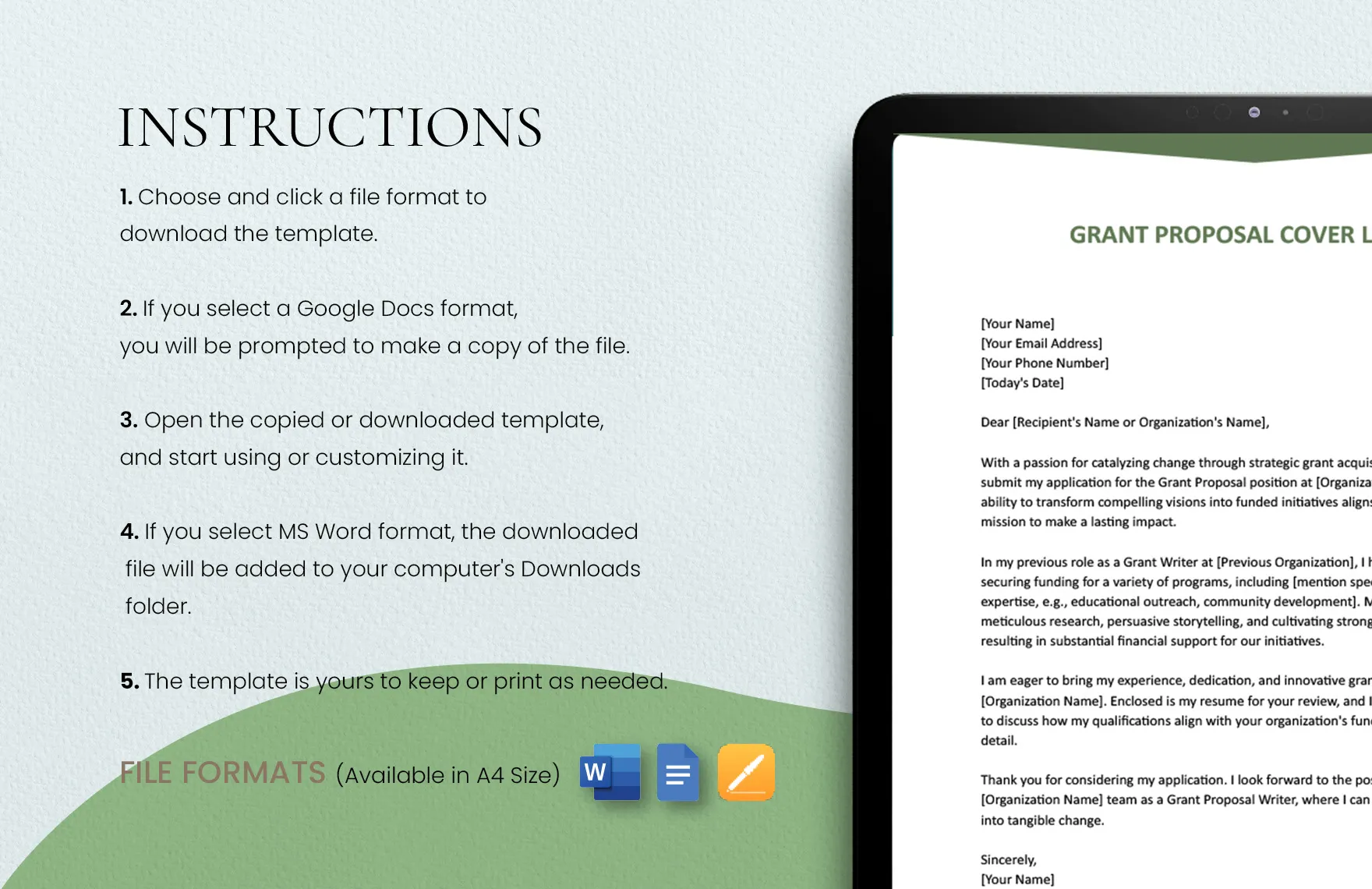
Tailoring to the Funder
Research the funder’s mission, values, and previous grant recipients thoroughly. Tailor your cover letter to align with their specific interests and funding priorities. Clearly demonstrate how your project aligns with the funder’s goals. Use the funder’s language and terminology where appropriate. Refer to specific aspects of the funder’s guidelines or mission statement to show you’ve done your homework. Addressing the funder’s specific priorities increases the likelihood of your proposal being considered favorably. Customization shows you have a genuine interest in their work and are not sending out a generic application.
Highlighting Key Achievements
Briefly mention relevant achievements or success stories. Include quantifiable results or data to support your claims. Focus on accomplishments that showcase your organization’s effectiveness and impact. Highlight previous projects that relate to your current proposal to build credibility. Show how your organization has a track record of success. Avoid excessive jargon, and keep the language straightforward and easy to understand. The goal is to capture the funder’s attention by showing the real-world benefits your organization can deliver.
Proofreading and Editing
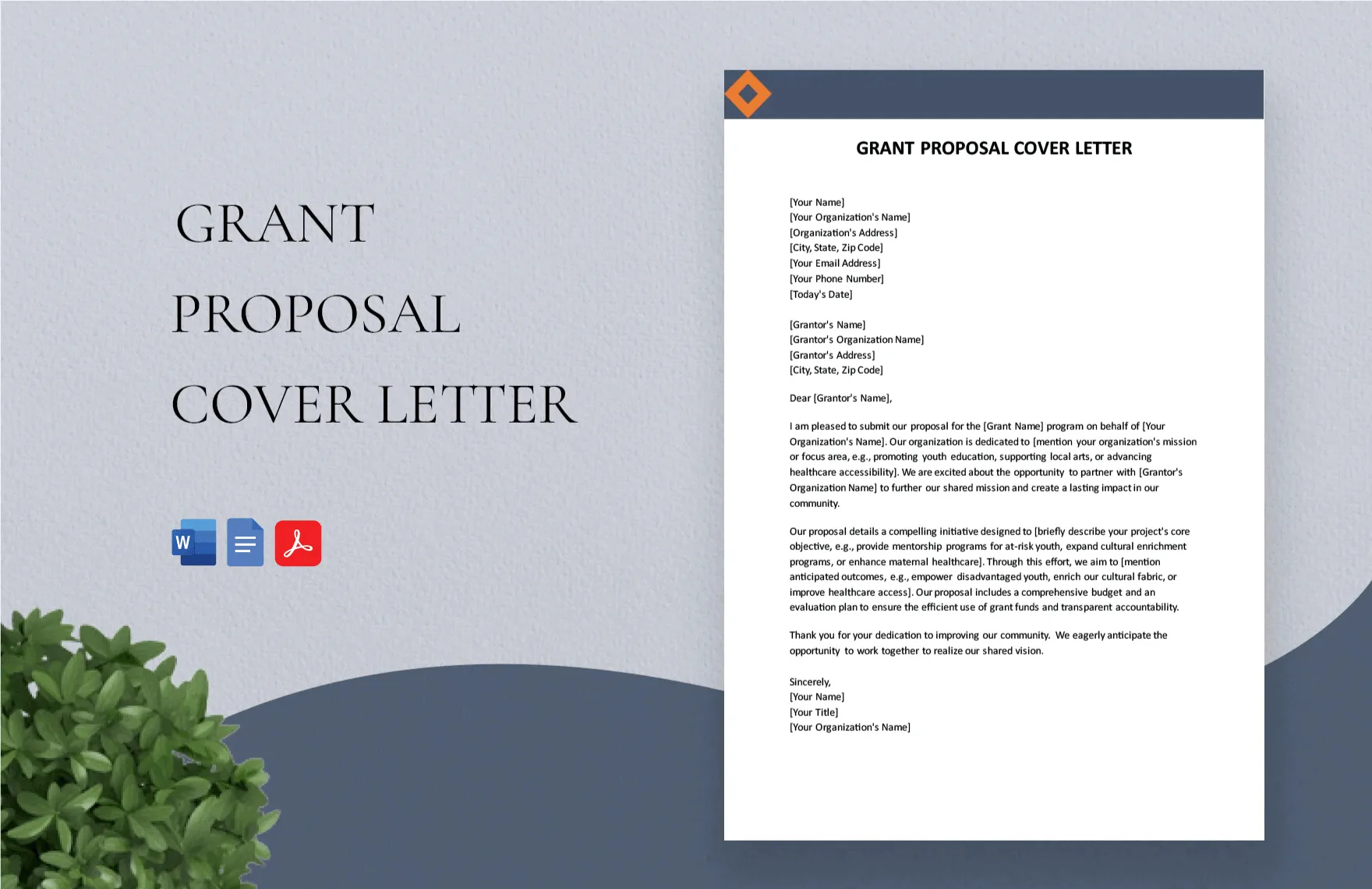
Always proofread your cover letter carefully for any grammatical errors, typos, or inconsistencies. Ensure the language is clear, concise, and free of jargon. Have someone else review the letter to provide a fresh perspective. Double-check all names, titles, dates, and contact information for accuracy. Errors can undermine your credibility and make your organization look unprofessional. Proofreading ensures that your message is conveyed effectively and that you present a polished and professional image. Thorough editing can significantly enhance the impact of your cover letter and increase your chances of securing funding.
Finalizing and Submitting Your Cover Letter
Before submitting, confirm that your cover letter meets all the specific requirements outlined in the grant guidelines. Ensure that you’ve addressed all the required elements. If the guidelines specify a particular format, follow it precisely. Check the submission instructions to make sure you’re sending the cover letter through the correct channels. After submission, keep a copy of your cover letter and the complete grant proposal for your records. Following these steps will give you the best chance of having your proposal seriously considered and funded. A well-executed submission process reflects your organization’s professionalism and attention to detail, reinforcing your commitment to excellence.
